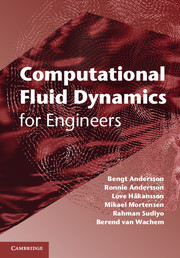1 - Introduction
Published online by Cambridge University Press: 05 January 2012
Summary
The purpose of this chapter is to explain the input needed to solve CFD problems, e.g. CAD geometry, computational mesh, material properties, boundary conditions etc. The difficulty and accuracy of CFD simulations for various applications, such as laminar and turbulent flows, single-phase and multiphase flows and reactive systems are discussed briefly.
Modelling in engineering
Traditional modelling in engineering is heavily based on empirical or semi-empirical models. These models often work very well for well-known unit operations, but are not reliable for new process conditions. The development of new equipment and processes is dependent on the experience of experts, and scaling up from laboratory to full scale is very time-consuming and difficult. New design equations and new parameters in existing models must be determined when changing the equipment or the process conditions outside the validated experimental database. A new trend is that engineers are increasingly using computational fluid dynamics (CFD) to analyse flow and performance in the design of new equipment and processes. CFD allows a detailed analysis of the flow combined with mass and heat transfer. Modern CFD tools can also simulate transport of chemical species, chemical reactions, combustion, evaporation, condensation and crystallization.
- Type
- Chapter
- Information
- Computational Fluid Dynamics for Engineers , pp. 1 - 7Publisher: Cambridge University PressPrint publication year: 2011



